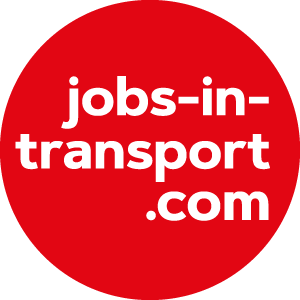
It has been some months now since ‘Station Champions’ Sir Peter Hall and Chris Green delivered their verdict on the UK’s rail station infrastructure and last month’s New Transit-presented UK?Rail?Stations 2010 conference in London gave Hall an opportunity to describe his vision for Britain’s stations.
Hall said there was a long way to go before passengers were signing the praises of stations. “Research shows that there’s a great deal of satisfaction amongst customers on the journey [but] much less on stations and station facilities,” he said.?
“So we’ve a long way to go before we reach 80% satisfaction with station facilities. The question is how do we get to 80% satisfaction over the vast estate of stations?”
Hall said that just 25 stations account for 42% of all rail passenger journeys, with over 1,000 smaller unstaffed stations carrying just 2% of the total number of passengers. “That’s important to keep in mind, but we can’t ignore the needs of that 2%, particularly if they are stuck on draughty or unsheltered station in the middle of the countryside without any information,” he added.
From four key criteria devised by Hall and Green - access to stations, information provision, station facilities and station environment - 10 stations have been identified as priorities for additional investment, based on a mystery shopper approach.
They have been untouched by human hands for many years,” Hall acknowledged adding that there are stark contrasts between stations. For example, Liverpool Central has a new Dutch-style combined retail shop and ticket office, but shabby platforms. Preston’s historic station is listed, but facilities for interchange are poor.
“But it’s the smaller stations where the problems really pile up and where the resources to do something are going to be most problematic,” he added.
Hall viewed Wakefield Kirkgate station as a good example of one of these problem stations. Although on the edge of the town centre, it is eclipsed in terms of importance and passenger volumes by the nearby Westgate station. It is unstaffed and served by a handful of local trains. “It’s a pretty horrific story at present,” added Hall.
However, he believes that the Netherlands may offer a solution for many of the UK’s problem stations. Hall described an unstaffed station on the edge of Utrecht.
“It’s an example of what can be done with an unmanned station,” he said. “It’s completely unstaffed but there is superb information and superb access into and out of it.”
However, in the UK, Hall singled out Rugeley Trent Valley for praise. “It’s a good example of what needs to be done, but it needs to be done on hundreds of smaller stations across the system,” he added.
He felt that a much bigger problem though was interchange between modes. “The model has to be to think beyond the ticket gates,” Hall said. “More specifically, how the passengers come in, how they go out and what happens to them there by whatever mode that they travel.” Once again he related the UK experience to Holland, contrasting Amsterdam’s Centraal station with recent investment in the UK, in particular Leeds and recently built interchanges in Barnsley and south Liverpool. “We’ve a long way to go though before we catch up with the Dutch,” he said.
For the future the champions have produced a vision of ‘super hub’ interchanges, developed out of the UK’s busiest rail hubs. Hall envisaged a London super hub comprising of St. Pancras International, King’s Cross and a new high speed line-linked Euston, connected by an airport-style people mover “It would be the most dramatic super hub in?Europe,” he predicted.
Hall also said it was essential that rail stations were integrated with local bus networks and, in particular, he enthused about the possibilities offered by bus-based rapid transit schemes in the UK. “That penny has not really dropped in this country though,” he added but noted that the opening of the long anticipated Cambridgeshire Guided Busway could see this change in the future.

TransportXtra is part of Landor LINKS
© 2025 TransportXtra | Landor LINKS Ltd | All Rights Reserved
Subscriptions, Magazines & Online Access Enquires
[Frequently Asked Questions]
Email: subs.ltt@landor.co.uk | Tel: +44 (0) 20 7091 7959
Shop & Accounts Enquires
Email: accounts@landor.co.uk | Tel: +44 (0) 20 7091 7855
Advertising Sales & Recruitment Enquires
Email: daniel@landor.co.uk | Tel: +44 (0) 20 7091 7861
Events & Conference Enquires
Email: conferences@landor.co.uk | Tel: +44 (0) 20 7091 7865
Press Releases & Editorial Enquires
Email: info@transportxtra.com | Tel: +44 (0) 20 7091 7875
Privacy Policy | Terms and Conditions | Advertise
Web design london by Brainiac Media 2020